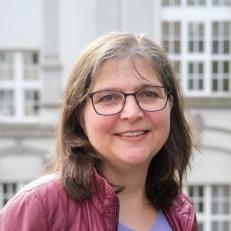Poetry@Rubens
Poetry@, Rubens ist eine Lesungsreihe, veranstaltet von der Philosophischen Fakultät der Universität Siegen gemeinsam mit dem Apollo-Theater und dem Haus der Wissenschaft, die der Gegenwartsliteratur in der Stadt Siegen seit 2007 ein Forum bietet. Einmal im Jahr gibt es eine ausgewählte Lyrik-Lesung (Prof. Dr. Dieter Schönecker) und einmal pro Jahr eine Prosa-Lesung (Prof. Dr. Jörg Döring).
Dank der Christa-und-Dieter-Lange-Stiftung ist es möglich im Format YoungPoetry Schullesungen ab Jahrgangsstufe 7 anzubieten und über der Literatur mit den jungen Menschen über aktuelle gesellschaftliche Themen ins Gespräch zu kommen. Jugendbuchautorinnen und Jugendbuchautoren waren in 2025 zum Thema „80 Jahre Ende des 2. Weltkriegs“ eingeladen. 2026 soll das Thema lauten „Mental Health im Spiegel aktueller Jugendliteratur“.
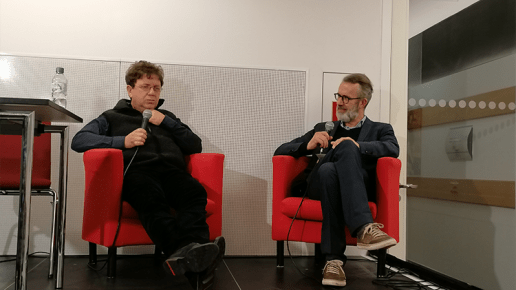
Poetry@Rubens
Lena Schätte: "The black on my father's hands" (S. Fischer 2025)
November 11, 2025, 7 p.m., Apollo Theater, Prose
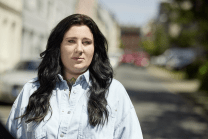
The first-person narrator is called "Motte" by her father. The father is a worker, gambler and drinker. Motte actually has two fathers: one who can run fast, knows all the hiding places when playing and thinks up an answer to every question. And the other, who is transferred from the factory floor to the office so that he doesn't saw his hand off when he's drunk. And the mother says that all the men in the family were like that with alcohol. Motte has also been drinking more than is good for her for a long time. Even as a child, she played waitress at the Schützenfest and drank the leftovers until she got warm. Now, as a young woman, she sometimes sleeps in the hallway because she can no longer hit the lock with her key. Her boyfriend supports her, but most of the time he can no longer stand properly himself. (Published by S. Fischer) Moderation: Prof. Dr. Jörg Döring
Michael Donhauser: "Under the walnut tree"
November 18, 2025, 7 pm, Apollo Theater, Poetry
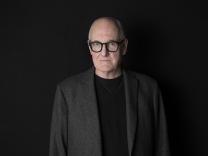
"A cessation, straightening up, all in black, a breath of attention" - with these words, Michael
Donhauser began his poetic flight almost forty years ago, which has lost none of its height, verve or versatility to this day. Carried by a wind that sets the rhythm, sometimes roaring, shaking the trees, the roses, then dying down again, like a breath in everything, "blowing from afar and celebrating", Donhauser's poetry has since explored the world a little more with each verse, looking around and listening, fanning it out and allowing it to be experienced by the senses in a work committed solely to poetic perception. A work that by no means comes to an end with Unter dem Nussbaum, but rather rises up in new texts with a view to what has already been published, scattered and believed lost, a flapping of wings, towards that place where it becomes clear what poems are capable of. (Publisher Matthes & Seitz Berlin) Moderation: Prof. Dr. Dieter Schönecker
Contact person

Univ.-Prof. Dr. Dieter Schönecker
Contact
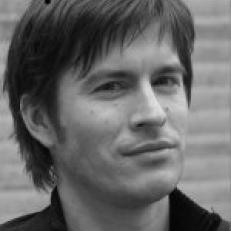
Univ.-Prof. Dr. Jörg Döring
Contact
Young Poetry
The Middle East conflict from the perspective of those who experience it
Author Martin Schäuble read from the new edition of his non-fiction book at FJM-Gymnasium
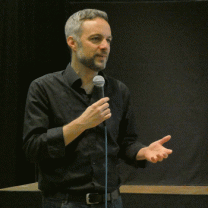
Points of view, also known as perspectives, stand for the way in which or from which someone views or evaluates something. In the plural, it means that several people have different perspectives on something. Different perspectives form the focus of Martin Schäuble's non-fiction book for young people "The story of the Israelis and Palestinians - The Middle East conflict from the perspective of those who experience it".
Dr. Martin Schäuble is a journalist and author. He studied and lived in Palestine. His book is based on conversations with Palestinians and Israelis. Schäuble was a guest at the Fürst-Johann-Moritz-Gymnasium in Weidenau at the invitation of the House of Science at the University of Siegen. He read to around 80 Year 11 pupils, alternating between the Palestinian and Israeli perspectives.
As an introduction, he chose the account of an eyewitness to the Hamas attack on the Kfar Aza kibbutz on October 7, 2023. Every house in the kibbutz had a "safe" room. The witness also fled to this room. 18 people crowded into the small room, the air to breathe became scarce, a window was tilted. The neighboring room was burnt out. Bodies lay in it. The people in the "safe" room were eventually rescued by a special unit of the Israeli army.
On the same day, a Palestinian father in the Gaza Strip reported an Israeli attack in which his young daughter was seriously injured by bullet fragments. The girl did not speak for seven months after the attack.
Two voices from 20 years ago. Abraham Bar-Am (Israeli): "I saw wars from an early age. I myself fought in the War of Independence, the Suez War, the Six-Day War, the Yom Kippur War and many other missions. My son fought. My grandson fought. He lies wounded in hospital. And I think my grandson's grandson will fight too.
Amelie Jaqaman (Palestinian): "My mother was born during the Ottoman occupation. I was born during the British occupation, my children during the Jordanian occupation, their children during the Israeli occupation. There is always someone who wants this country, but never someone who wants us. Isn't that a tragedy?"
Martin Schäuble showed the pupils a poster from the 1930s entitled "Visit Palestine". The poster was designed by the Jewish Austrian Franz Kraus, who fled from the Nazis. It shows the view of Jerusalem from the Mount of Olives. 50 years later, Palestinians used this template for a protest poster against the Israeli occupation.
The plan for two states drawn up by the United Nations after the Second World War never became reality. After the First Arab-Israeli War, around 500,000 Palestinians were expelled; refugee camps were set up. After 1948, many Jews were also expelled from Arab countries. According to the author, the current political situation between Hamas, Fatah and the right-wing religious Israeli government gives no indication of a solution to the complicated situation. It looks as if the Israeli government wants to expel the Palestinians completely from the Gaza Strip.
The reading was followed by a multi-layered discussion. YoungPoetry is funded by the Christa-und-Dieter-Lange-Stiftung.
"A role model for us all"
The author Reiner Engelmann read from his book for young people "Der Fotograf von Auschwitz" at Bertha-von-Suttner-Gesamtschule
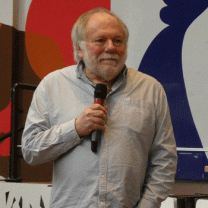
Who remembers the atrocities of the National Socialists when there are fewer and fewer contemporary witnesses? It is the records of the life stories and memories of the victims and sometimes also those of the perpetrators. These include Reiner Engelmann's book for young people, "The Photographer of Auschwitz". The author from the Hunsrück region traveled to the Siegerland region to present the life of Polish photographer Wilhelm Brasse, who became known as the "Photographer of Auschwitz", at the Bertha von Suttner Comprehensive School and to talk to around 250 pupils in years 10 and 11. Engelmann had been invited by the House of Science at the University of Siegen. The reading was funded by the Dieter and Christa Lange Foundation as part of the YoungPoetry format. Literary scholar Dr. Jana Mikota introduced the author: "With what he does, he is a role model for us all."
Wilhelm Brasse was born in December 1917 in what was then Saybusch, now Zywiec, in Silesia. He worked as a professional photographer from 1935, taking portraits and passport photos in his uncle's remote photo studio. As a young man, according to Engelmann, Brasse could certainly be described as a "bon vivant" who liked to party, dance and also liked girls. After the German invasion of Poland, Brasse wanted to enlist in the Polish army in his home town. However, Zywiec was already occupied when he arrived. Despite being bilingual - he spoke Polish and German - he refused to be recognized as a German. Together with friends, he set off in March 1940 to join the Polish resistance in France. The group was arrested shortly before the border.
Brasse was locked in a tiny cell with 25 other people. Many of the prisoners did not survive this first station as prisoners. Engelmann: "It was pure luck to survive those four months." Brasse was transported to Auschwitz via Tarnow in the summer of 1940. The extermination camp was under construction. Brasse was tattooed with the prisoner number 3444, which replaced his personal name in his salutation until the liberation of the Mauthausen concentration camp - his last prisoner station - by the US Army in 1945.
In Auschwitz, Brasse was first employed in road construction, then as a corpse carrier, in the potato peeling plant and finally as a camp photographer. As a photographer, he was a so-called prisoner functionary. This status was associated with better living conditions and better chances of survival. Engelmann's book, which is based on conversations with Wilhelm Brasse, describes the endless suffering and often agonizing deaths of countless fellow prisoners. Brasse photographed thousands of prisoners. He made sure that these photographs were not destroyed by the Nazis, but are still used today as testimonies and as a reminder of those who were murdered.
The auditorium of the Bertha von Suttner Comprehensive School was silent for two school hours. The pupils listened spellbound - if not speechless - to what the author had to say. The second 90 minutes were available for questions and discussion. The young people wanted to know a lot. They never ran out of questions: How do you deal with Holocaust deniers? Did the camp staff enjoy torturing, abusing and murdering people? Were those responsible held accountable and punished? Did they show an awareness of injustice? Can something like the Nazi dictatorship happen again? How can it be prevented?
Three hours passed quickly. The pupils had prepared for the reading and discussion in class. Reiner Engelmann's story about the murderous and inhumane events in Auschwitz and other extermination camps during the Nazi terror in Europe was deeply moving, regardless of prior knowledge.
Contact person

Dr. phil. Jana Mikota
Contact
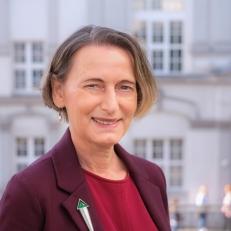
Katja Knoche
Contact
